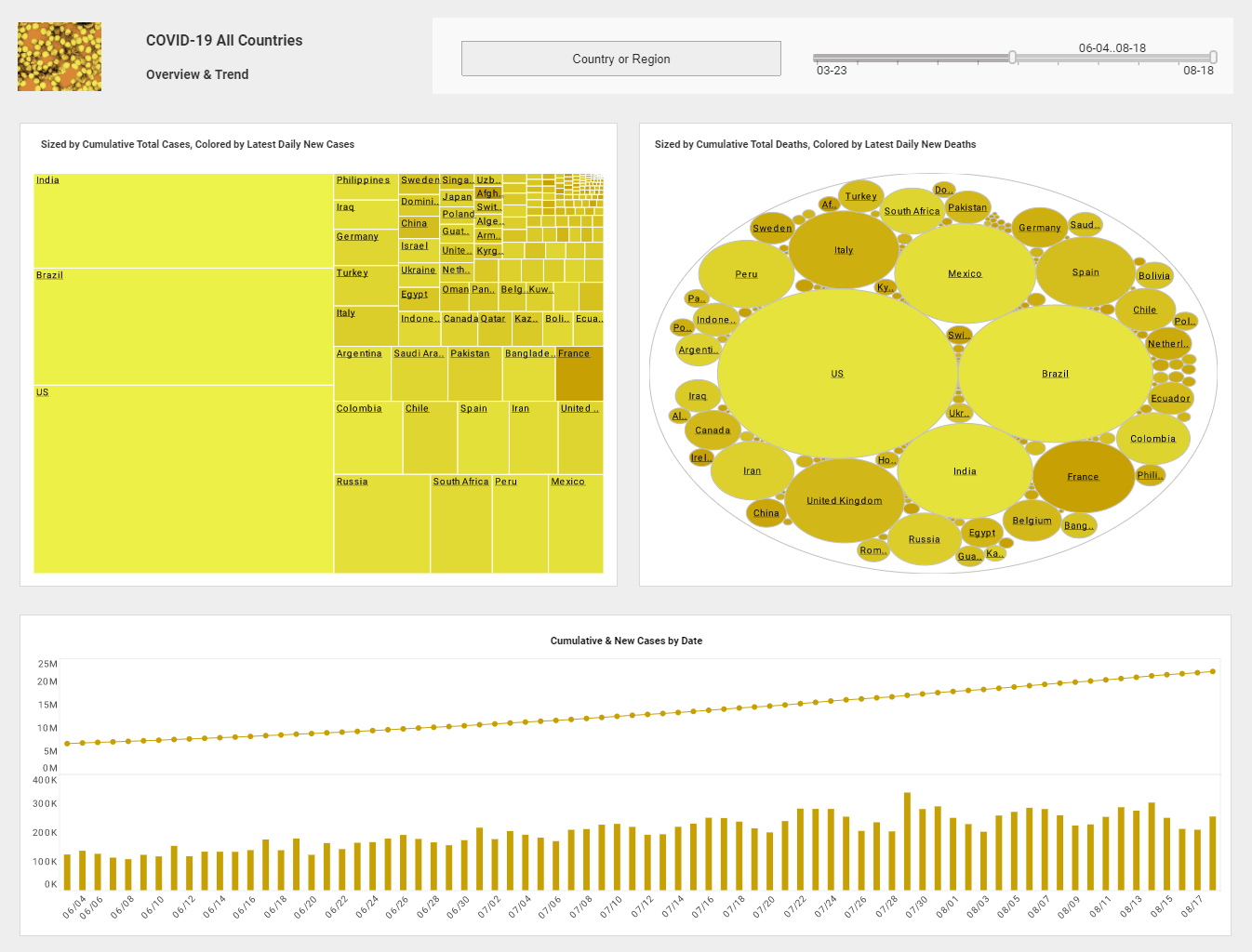Self-service Data Mashup
This is the continuation of the transcript of a Webinar hosted by InetSoft on the topic of "The Evolution from Information Publishing to Insight Discovery and Analytics." The speaker is Mark Flaherty, CMO at InetSoft.
Although they may still have some cases of information being stored on the side, which is pretty ubiquitous today. I think we see this self-service data mashup with a few of the BI platforms and the BI tools, such as InetSoft’s. They’ve all added features for the end user to bring some piece of data from the side.
And there’s something I always struggled with as a manager of BI group, and that was, as much as we tried to get all of the information into the BI environment, but we could never get 100%. So, we had to focus on the core information because people were doing it anyway. They would publish a report as an Excel spreadsheets and then they would get other data and paste that into the Excel spreadsheet and mash it up.
So, in fact that was their departure point for the analysis, the presentation of data. But I think it’s important to know that you have to have some data infrastructure in place because there has to be some level of quality and some level of trust in what’s behind the data that you are interacting with.
Next question: When you talk about IT and the new enterprise where does InetSoft fit into that? Is it more a tool designed for developers or for users? Are there different tools in the tool group?
| #1 Ranking: Read how InetSoft was rated #1 for user adoption in G2's user survey-based index | Read More |
Dashboard Development Environment
Well, essentially StyleBI has three modes of use. There’s dashboard development environment which can be used by developers, but business users actually find that quite usable too.
And there’s a server environment which is where IT can manage the application, the sharing and permission aspects, and where applications can be saved on the server, and be continuously used and refreshed with larger volumes of data. And then there’s the device experience which spans desktops, laptops and mobile devices where people are not necessarily creating new analyses, but they are working with them. And dashboards and visual analyses in particular are interactive and easy to work with. So, they’re exploratory tools. They’re not static. So, it’s really just the developer experience, the IT experience, and the consumer experience.
Another question is where are we in the evolution of information management with delivery? Even with advanced products like StyleBI, where are we?Even though it seems like we’re at a point where technology use is being commoditized, which is to some extent true. The tools themselves are being commoditized. I think we’re just at the very beginning of what we can do. Over the past decade we figured out how to collect and store lots of information. But we haven’t really worked out a how to use that information and what is the model for really managing, curating, and doing a lot of other things. So, in my mind the information evolution has just barely begun. I think one thing that I notice people tend to talk about is where is our business in relation to information management, in relation to analytics and BI? Very often that question can’t be answered about the level of an enterprise, the level of an individual business, or even the level of a department. It really comes down to individuals.
 |
Read the top 10 reasons for selecting InetSoft as your BI partner. |
And you’ll find that there are some individuals who are highly advanced in their use of information and analytics than other people. Many things can average out, but I think there are certain individuals who embrace BI, and these are the ones who are driving the acquisition of these new tools with or without IT’s consent. But, in general, we’re at the start of this new phase, the start of this revolution.
Another question is how does InetSoft's solution control who has access to self-service data mashup?
InetSoft's solution employs a robust access control framework to manage and control who has access to self-service data mashup capabilities. The platform incorporates granular access controls that enable administrators to define and assign specific permissions to users based on their roles and responsibilities within the organization. This ensures that only authorized individuals can leverage the self-service data mashup features, maintaining the integrity and security of the data. The access control mechanisms provided by InetSoft include features such as role-based access control (RBAC) and fine-grained permissions.
Through RBAC, administrators can assign users to predefined roles with distinct levels of access to data mashup functionalities. Fine-grained permissions allow for even more precise control, specifying access rights at the dataset or attribute level. By implementing these access controls, InetSoft's solution enables organizations to strike a balance between empowering users with self-service data mashup capabilities and safeguarding sensitive information from unauthorized access, contributing to a secure and controlled BI environment.
Last question, what kinds of data sources can be mashed up with InetSoft's server solution?
Some common types of data sources that can be mashed up with InetSoft's server solution include:
- Relational Databases:
- InetSoft's solution typically supports popular relational databases such as MySQL, PostgreSQL, Microsoft SQL Server, and Oracle. Users can seamlessly integrate data from these databases for comprehensive analysis.
- Big Data Sources:
- InetSoft often provides connectors or integration capabilities for big data platforms like Apache Hadoop, allowing users to mash up and analyze large volumes of structured and unstructured data.
- Cloud-based Data Storage:
- The solution is likely to integrate with cloud-based data storage services, such as Amazon S3, Microsoft Azure Blob Storage, or Google Cloud Storage, facilitating the incorporation of data stored in the cloud into BI analyses.
- Spreadsheet Data:
- InetSoft's BI solution typically allows users to import and mash up data from spreadsheet applications like Microsoft Excel or Google Sheets, providing flexibility for users who work with spreadsheet-based data.
- Web Services and APIs:
- The solution often supports the integration of data from web services and APIs, enabling users to pull in real-time data from various online sources, third-party applications, or custom APIs.
- Flat Files and CSV:
- Users can often mash up data from flat files, CSV (Comma-Separated Values) files, and other structured file formats, providing versatility in handling different types of datasets.
- Enterprise Applications:
- Integration with enterprise applications like SAP, Salesforce, or Microsoft Dynamics is commonly supported, allowing users to incorporate data from these applications into their BI analyses.
- NoSQL Databases:
- InetSoft's solution may offer compatibility with NoSQL databases such as MongoDB or Cassandra, providing options for organizations that leverage non-relational databases.
- Custom Data Sources:
- InetSoft's server solution often allows users to connect to custom data sources through its extensible architecture, accommodating unique data storage systems and formats.
| Previous: Using Interactive Visualizations on iPads |


